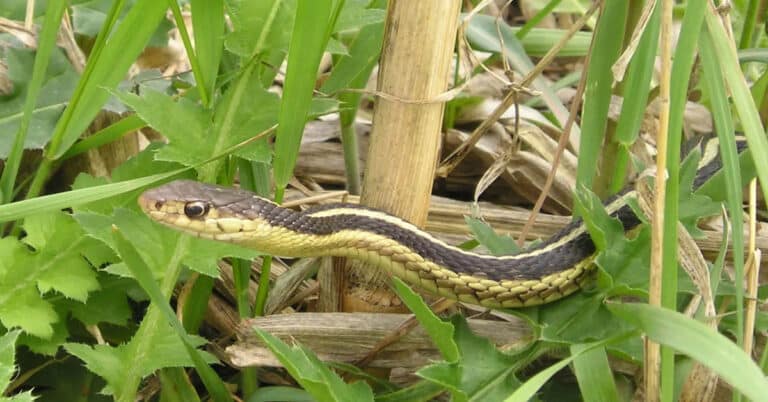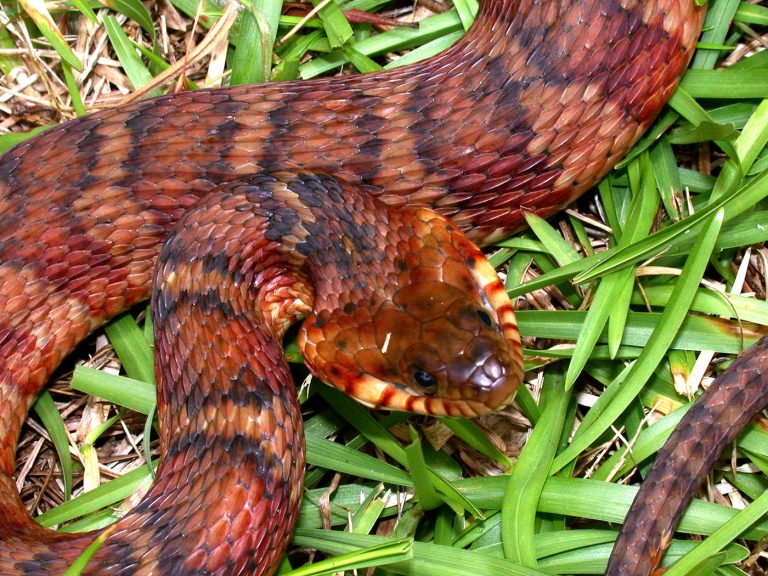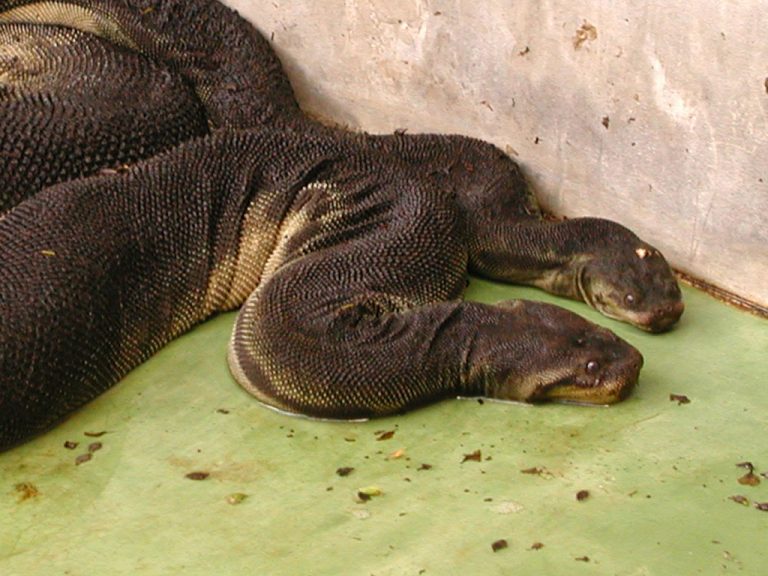Bull Snakes
Scientific Classification
| Kingdom: | Animalia |
| Phylum: | Chordata |
| Subphylum: | Vertebrata |
| Class: | Reptilia |
| Order: | Squamata |
| Suborder: | Serpentes |
| Family: | Colubridae |
| Subfamily: | Colubrinae |
| Genus: | Pituophis |
| Species: | P. Catenifer |
| Subspecies: | P. c. Sayi |
| Trinomial name: | Pituophis catenifer sayi |
Bull Snakes are biologically named Pituophis Catenifer Sayi. It is a very big non poisonous Colubrid snake that is widespread in the northern regions of Mexico, the Central parts of the United States, and the South West regions of Canada. At present, it belongs to the subordinate varieties of the gopher snake.

Anatomy

The normal length of a Bull Snake is almost 6 ft or 1.8 meters There are cases of their recorded length extending to as much as 8 ft 4 inches or 2.5 meters. The weight of the matured snakes varies from 1 to 3.6 Kg or 2.2 to 7.9 pounds. The heaviest snake possibly weighs as much as 4.5 kg (9.9 pounds). This is why many consider it as the biggest snake in the U S. However, it normally never attains lengths in excess of those of the Indigo Snakes, and weights or diameters greater than the rattle snakes. They are normally of a yellow color having patches of either white, brown and perhaps black color, and at times, they are red in color. They have blotches in their design; on top they have big blotches, on the sides, three groups of spots, and the tail displays black bands. The colorization differs, with species of white and albinos. In order to differentiate the juvenile gopher snakes from the juvenile bull snake, you will need a scale counter.
The scales of the adult wild Bull Snake are strongly keeled, with a colorization that differs from land color to tan color, fading to straw yellow and further to dull orange. A keel means a longitudinal ridge on a scale.
The color of the head is normally that of the ground. In the midst of the top labial scales there are dark straight lines. From the eyes, a dark line stretches diagonally backwards down to the posterior part of the throat. Besides, there are eye catching dark patches on the back right, extending from the neck to the tip of the tail. The color of the head is dark brown to almost black, and as it progresses towards the tail it fades to a dull color, but in certain bull snakes, it is nearly red. Tiny spots are seen laterally.
Behavior
If this Bull Snake is attacked, by any living being as big as a person, the first step it takes is to spring up and pretend to appear as big as it can. Then it makes a show of springing at you, and simultaneously tries to retreat and escape.
Bull snakes take advantage of imitating an imposing rattle snake’s reaction when endangered. First, it produces a hissing sound or otherwise, it breathes out through an intersected glottis that flaps, backward and forward producing the sound of a rattle. In addition, takes the body form of a rattlesnake’s posture of an S-curve pretending to get ready to strike. Often it vibrates its tail continuously between leaves or the brush, and makes its head flat to try to impersonate the rattlesnake’s triangular head. All these tactics are practiced for threatening or scaring its predator, but never to attack.
Habitat

You can often see these Bull Snakes all over the Central and southwest parts of the United States, Saskatchewan and North Mexico, deserts of British Columbia and Alberta, and Canada. You can also see them in the United states, in Arizona, Arkansas, Colorado, Illinois, California, Idaho, Lowa, Missouri, Kansas, Montana, Minnesota, Nebraska, New Mexico, Oklahoma, Nevada, Northern Dakota, Southern Dakota, Texas, Oregon, Utah, Wisconsin, Eastern Washington and Wyoming.
You can also find these Bull Snakes in sandy places and open country yards, also in barren pines where they consume rodents, lizards and birds. Bull Snakes lay eggs, even if they bite you, they are not poisonous.
As a Pet
Breeding
The breeding period of these Bull Snakes is in the month of March. They lay their eggs in April, and some lay eggs in September. The average number of eggs they lay in unsafe locales including the sand, is 12. They are then left there for incubation. A clutch can have 5 to 122 eggs. The eggs have an elliptical shape, and are sticky, rough and 70 mm (23/4 in.) long. These eggs hatch in the eighth or ninth month. The size of the little bull snakes, when hatched are 20 to 46 centimeters (8 to 18 in) and they are gray in color prior to the first shedding.
Housing

You can house the Bull Snakes in a conventional vivarium. These snakes are big and agile; hence you will require a habitat that is big enough. The formulae for the size of the vivarium is 66% of the length of the snake and x 33% of the snake’s length for the width. A vivarium of capacity 10 gallon is fine for just born snakes of length up to 30. The conventional size of a vivarium for the fully grown bull snakes is 4’ x2’ x2’. Height of the vivarium is not an issue, since they are terrestrial snakes. You would do well, however, to provide some sort of rigid climbing facility, because these hefty snakes with their powerful neck muscles will easily upset any flimsy fittings in the vivarium.
Bull Snakes prefer burrowing in the substrate. Use cypress, ground walnut husks, aspen shavings and mulch for them to burrow. Never use pine chips or cedar, since they are toxic to them.
In the vivarium, provide hideouts at both the warm and the cool ends. Prepare hideouts sufficient enough for the snake to snuggle in and rest fully. Use either cork tubes or boxes of cardboard or fabricated hide outs.
Food
Bull Snakes eat tiny animals such as rats, mice, ground squirrels, pocket gophers and rabbits; in addition, it consumes lizards, birds’ eggs and ground nesting birds. The young Bull Snakes rely on frogs, tiny lizards and little mice. It is by squeezing that the Bull Snakes kill their prey.
When these Bull Snakes are in confinement, they develop great hunger. So making them eat is very simple. Just contrary to feeding them with live rodents, you could better give them thawed or frozen rodents, since it is convenient for you, and on the safe side for the snakes. Feed your young snakes within a gap of 5 to 7 days. As far as adults are concerned, give them a normal meal within a gap of 10 to 15 days.
Water
Give your Bull Snakes pure water throughout. Clean the bowl for water twice a week. Use antibacterial soap for cleaning the bowl properly. There is no necessity of using bleaching powder, provided you clean it regularly. In case the snake passes feces in the bowl, discard it and clean the bowl at once.
The best thumb rule for giving food for your Bull Snakes of all sizes is to give it a moderate size rodent in a span of 7 to 10 days, then your snake is content. Feed the juvenile more frequently, like once in 5 days
Handling
Bull Snakes are generally passive, and over a period, they will take well to being handled, though they have built a reputation for bad attitude, They can display a defensive attitude at times. Try never to hold the neck of your bull snake. Instead, use both your hands to slide under it and lift it loosely and slowly. Make sure also not to lift it, at least for a few days after its food, as it tends to be irritated then.

Having discovered a fondness for insects while pursuing her degree in Biology, Randi Jones was quite bugged to know that people usually dismissed these little creatures as “creepy-crawlies”.







